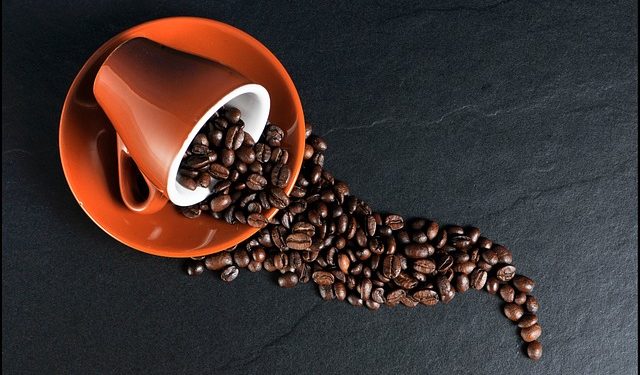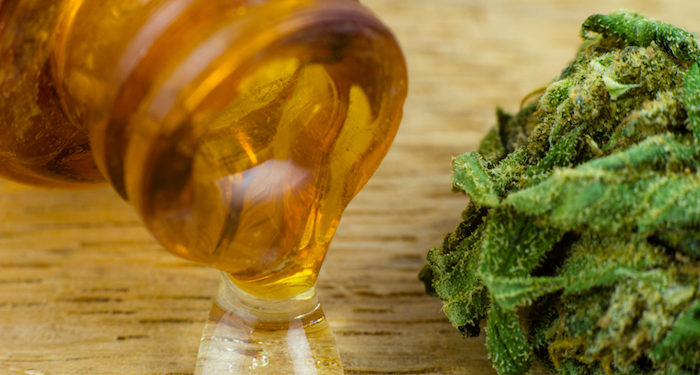The Insider’s Guide to Tia-Clair Toomey’s CrossFit Diet (original) (raw)
On an average workout day, Tia-Clair Toomey eats:
- 140 to 150 grams of protein
- 230 to 250 grams of carbohydrates
- 65 to 70 grams of fat
For a total of 2,200 to 2,500 calories a day.
But what she eats, when she eats it, and how she supplements might surprise you.
We interviewed Tia-Clair Toomey because she’s a CrossFit® athlete worth paying attention to. In fact, she’s probably the CrossFit athlete to pay attention to. She’s The Fittest Woman on Earth™, an actually trademarked term that can only be used to refer to the reigning CrossFit Games champ. And nobody else has held the title for as long as Toomey, having won the CrossFit Games in 2017, 2018, and 2019. She’s the most dominant female CrossFit athlete of all time.
Not to mention the fact that in 2018, she won a gold medal at the Commonwealth Games as a -58kg weightlifter, totaling 201 kilos.
But you have to hear about the rest of this woman’s nutrition plan, which includes so much CBD that she even takes it pre workout.
Tia-Clair Toomey’s Calories and Macronutrients
Here are the basic stats:
- Height: 5’4″
- Weight: 135 pounds
- Calories: 2,500 grams
- Protein: 140-150 grams
- Carbs: 230-250 grams
- Fat: 65-70 grams
That’s her diet during the Games season. In her words, “when I’m really prioritizing training and we’re building up to the Games, I’m having at least 2500 calories a day.”
Those calories actually add up to about 2,200, but we assume most of the rest of her calories would come from carbohydrates, which she emphasizes strongly.
“I really do make sure I’m consuming carbs around my training, and that’s just so I have a lot more energy when it comes to training and I’m able to produce that energy when I’m needing it,” she says. “So I’ll make sure I’m having more carbs around training times and having my fats either a few hours before or a few hours after.”
This is a pretty common strategy for athletes. We’ve written on the diets of CrossFit champ Rich Froning and weightlifter Katherine Nye, who both limit fat surrounding their workouts because they slow digestion. Not a big deal when you aren’t about to train, but limiting fat pre and post workout means that the carbs are absorbed more quickly so they can provide energy before the workout and replete your carb stores afterward. (Fat sitting in the belly can also produce a “heavy” feeling that’s not always pleasant to train with.)
[Related: The Insider’s Guide to Rich Froning’s Diet]
Tia-Clair Toomey and Fasted Training
That said, sometimes Toomey will train fasted is she’s just woken up.
“If I have a morning session, I’ll wake up and train on an empty stomach because I have had a lot of food for dinner,” she says. “I’m not wanting to burn that fat off for weight loss so much as I’m wanting to use that energy I’ve stored overnight. That’s just something I’ve felt has worked really well for me and I can function really well on that. But if I don’t train until late afternoon, I’ll have my fats in the morning at breakfast and make sure I have my carbs closer to my training.”
How Much Does Tia-Clair Toomey Train?
She trains a lot. Once the season kicks off with the CrossFit Open she’ll work out about 5 hours a day, starting with a morning session for 90 minutes, then she’ll head home and sleep or do so some mobility work, and then spend the rest of the time in the gym.
“That’ll be about four hours or so in the afternoon, making sure I’m building my strength, working on gymnastics skill, doing a lot of metcons, just making sure I’m covering that variety CrossFit provides,” she says.
That’s five hours total, but sometimes, when the Games are just around the corner, she’ll train for eight to ten hours a day over three workouts.
[Related: Everything You Want to Know About Thor Bjornsson’s Strongman Diet]
What Kind of Foods Does Tia-Clair Toomey Eat?
Well she’s not Paleo. Toomey started her career in CrossFit avoiding wheat because the Paleo diet — no grains, no legumes — used to be all the rage in the sport, but these days she doesn’t avoid her favorite sourdough bread anymore. As opposed to following rigid rules that others have designed, she’s more about listening to what her body responds to.
Today, she has found that dairy doesn’t agree with her much, but she eats a wide variety of whole foods.
“I take a very conscious effort on what kinds of foods I’m putting into the body,” she says. “So I’m making sure I’ve got a lot of fresh vegetables and fruits. I really enjoy red meats but I want to have a variety of proteins, so I’m making sure I’m having fish and chicken in my diet. That’s something that’s very important to me, rather than ‘Oh, it’s Wednesday, I have to eat more carbs.’ It doesn’t work like that.”
In other words she doesn’t cycle carbs like a lot of athletes do — eating more on workout days and less on rest days. She’s more about consistency and food quality.
[Related: Our complete guide to carb cycling for athletes]
As far as daily staples go, she’s a huge fan of apple cider vinegar every morning.
“That’s for a number of reasons,” Toomey says. “I think that it’s a really great way to help with digestion and it fixes so many things within the body that you aren’t very aware of, so that’s something I have religiously.”
She’s also really into coconut water, pretty much every day she makes a smoothie with coconut water and vegetables. Coconut water is a good source of electrolytes, which are important for maintaining hydration.

Tia-Clair Toomey’s Supplements
General Health
“In the morning I have my zinc tablets, fish oil tablets, magnesium tablets, and I like to have multivitamins as well,” she says.
But there’s one supplement to which she just says no.
Caffeine
“I stay away from pre workouts,” she adds. “I’ll have coffee if I need to but I try to not have coffee after lunch. It doesn’t keep me up at night, I just know how long caffeine stays in the body for, so I’m trying to make sure when it comes to resting and recovering at night time, I don’t have as much caffeine in the body.”

Dougie Jones/Shutterstock
CBD
Finally, she takes a lot of CBD, a cannabinoid found in cannabis.
Here, we should point out that the CBD company Beam sponsors Tia-Clair Toomey and they helped to set up the interview. No money changed hands and this isn’t a sponsored post, but we should disclose that Beam had some involvement with this article’s publication.
CBD comes from cannabis, but it does not get you high. More and more evidence is suggesting that this newly legal chemical can potentially help with pain relief, reducing inflammation, and anxiety-related insomnia.(1)(2)(3)(4)(5)(6)(7)(8)
It might come as a surprise to some that Toomey likes to take CBD not just to help her achieve deeper sleep, but also before working out. But she finds that this compound isn’t about chilling you out so much as it is about helping to calm the mind — she says it helps her to focus during workouts.
“It’s something I was a little skeptical of as well, but it actually helps you stay focused in what you’re about to do,” she says. “I’m no professional when it comes to talking about CBD, but I know it has really allowed me to focus and just channel my energy into the particular workout I want to do. Every so often you want to zone out, but I know when I’m constantly taking my CBD oil I’m able to stay focused and stay in the zone. And it has really helped.”
She takes about 8 to 10 milligrams of CBD throughout the day. Some athletes take a lot more — strongman athletes Tom and Luke Stoltman told us they take about 100 milligrams, but then again, they weigh well over twice Toomey’s bodyweight.
CBD is allowed by the World Anti-Doping Agency, and the World Health Organization and the National Institutes on Drug Abuse also have stated that the drug isn’t problematic. That said, the FDA is still a little skittish, and published a paper in late 2019 saying that we need more research on it before we start mainlining CBD all day. Research is ongoing.
[Related: What every athlete should know about CBD]
Wrapping Up
So, in short, Tia-Clair Toomey eats a pretty standard medium protein, high carb, low fat diet — almost every athlete we talk to has a macro split similar to hers — she limits fat around her workouts, emphasizes whole foods and coconut water, likes CBD, and takes magnesium, fish oil, zinc, and multivitamins.
There’s a lot of great information in this interview, just remember to speak with your physician before starting a new diet or workout program.
Featured image via @tiaclair1 on Instagram.
References
1. Burstein S, et al. Cannabidiol (CBD) and its analogs: a review of their effects on inflammation. Bioorg Med Chem. 2015 Apr 1;23(7):1377-85.
2. Klauke AL, et al. The cannabinoid CB₂ receptor-selective phytocannabinoid beta-caryophyllene exerts analgesic effects in mouse models of inflammatory and neuropathic pain. Eur Neuropsychopharmacol. 2014 Apr;24(4):608-20.
3. Woodhams SG, et al. The role of the endocannabinoid system in pain. Handb Exp Pharmacol. 2015;227:119-43.
4. Philpott HT, et al. Attenuation of early phase inflammation by cannabidiol prevents pain and nerve damage in rat osteoarthritis. Pain. 2017 Dec;158(12):2442-2451.
5. Shannon S, et al. Cannabidiol in Anxiety and Sleep: A Large Case Series. Send to Perm J. 2019;23:18-041.
6. Zuardi AW, et al. Effects of ipsapirone and cannabidiol on human experimental anxiety. J Psychopharmacol. 1993 Jan;7(1 Suppl):82-8.
7. Bergamaschi MM, et al. Cannabidiol reduces the anxiety induced by simulated public speaking in treatment-naïve social phobia patients. Neuropsychopharmacology. 2011 May;36(6):1219-26.
8. Hammell DC, et al. Transdermal cannabidiol reduces inflammation and pain-related behaviours in a rat model of arthritis. Eur J Pain. 2016 Jul;20(6):936-48.